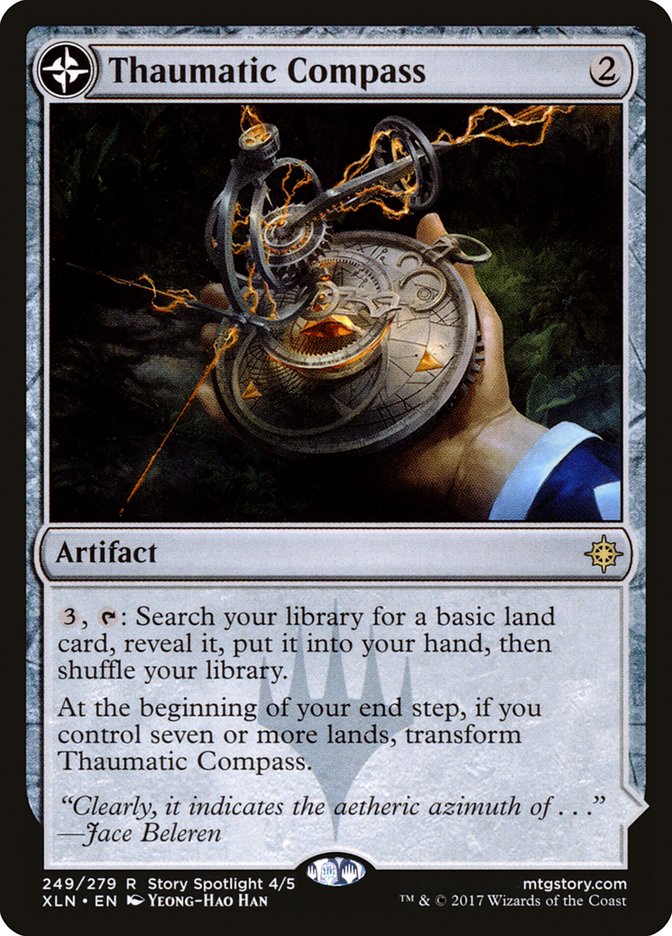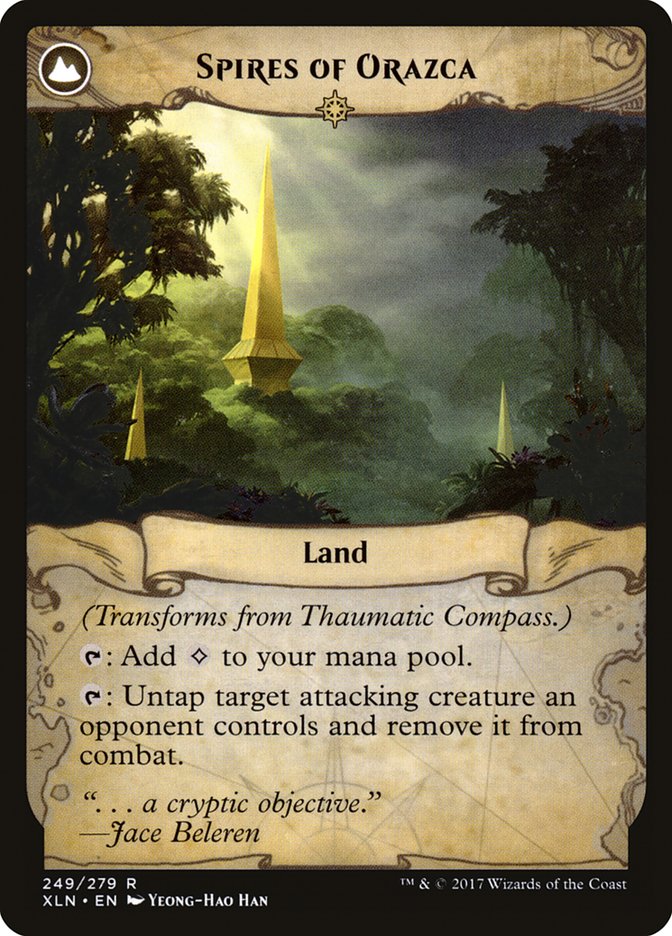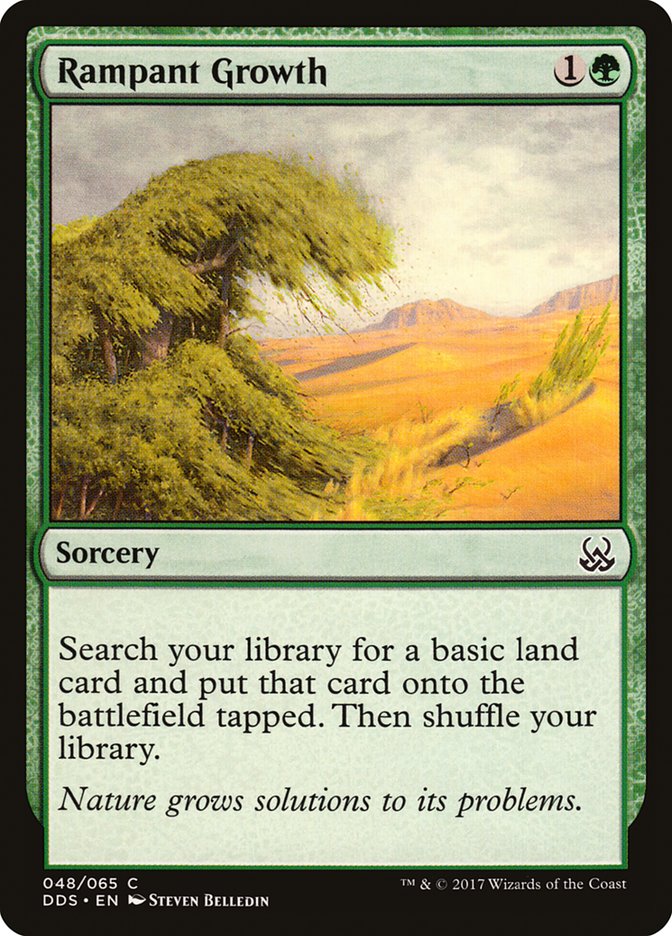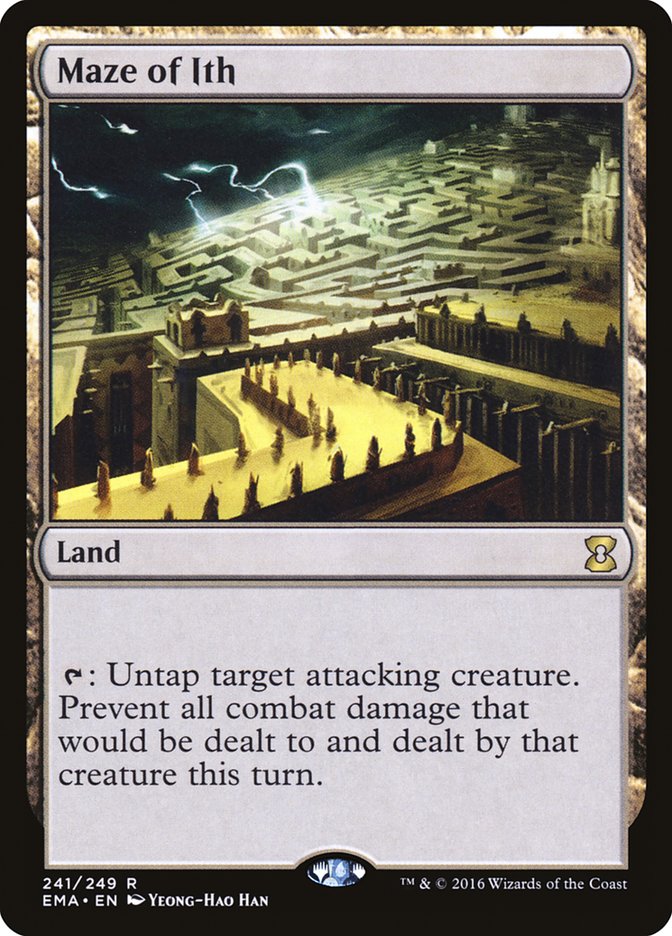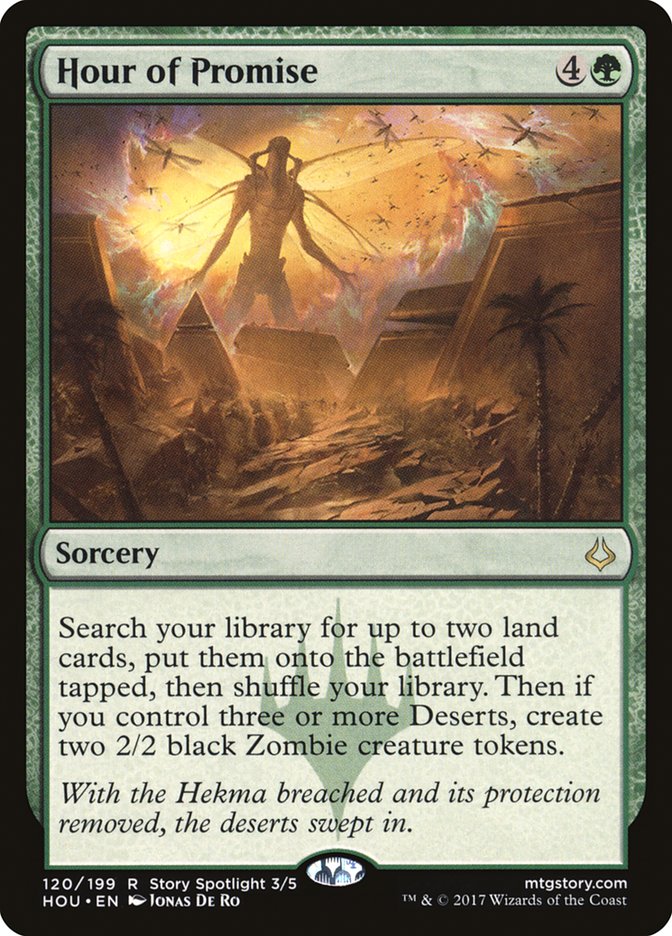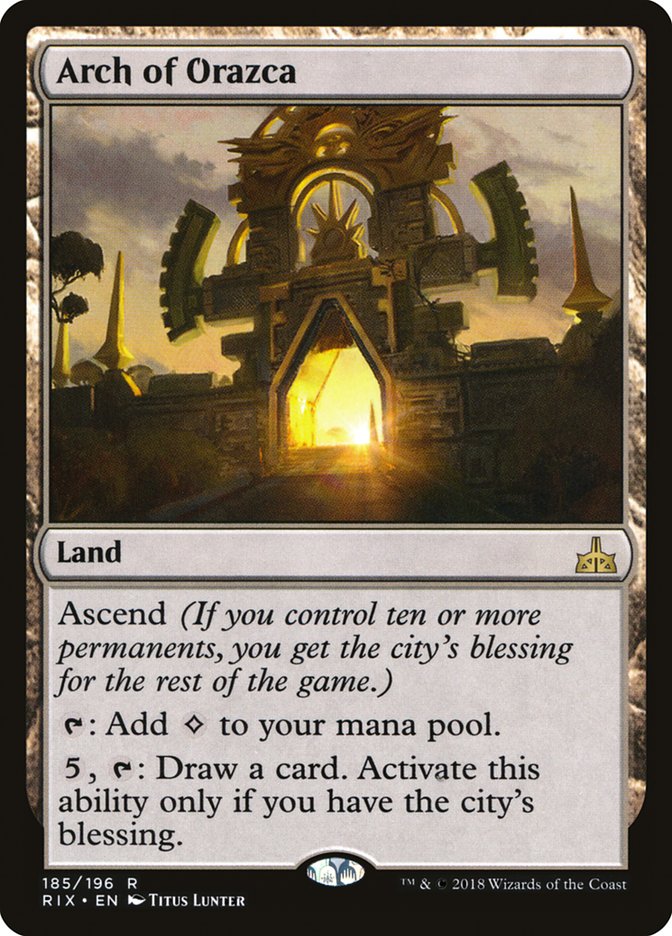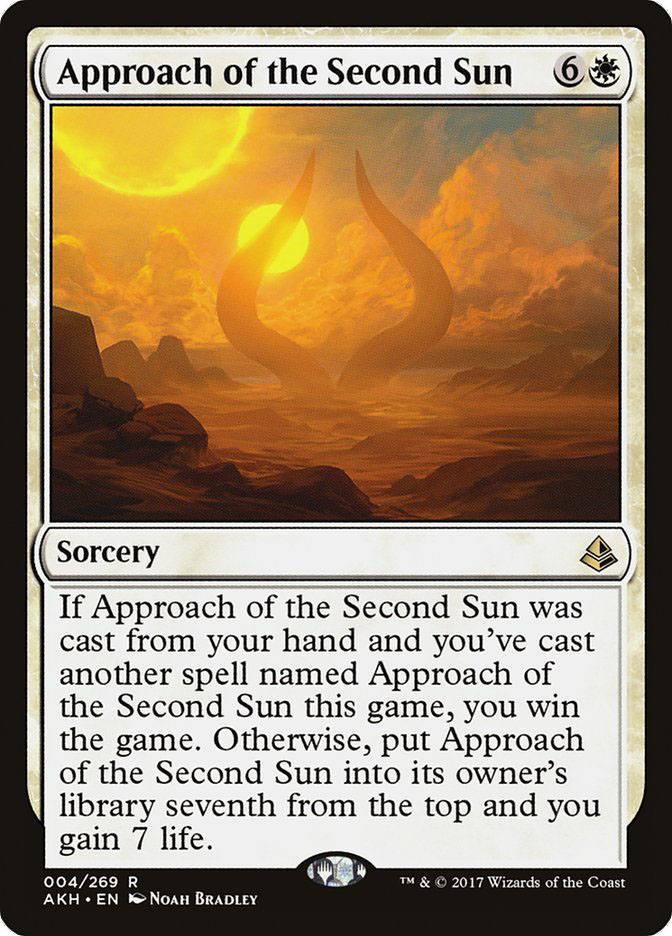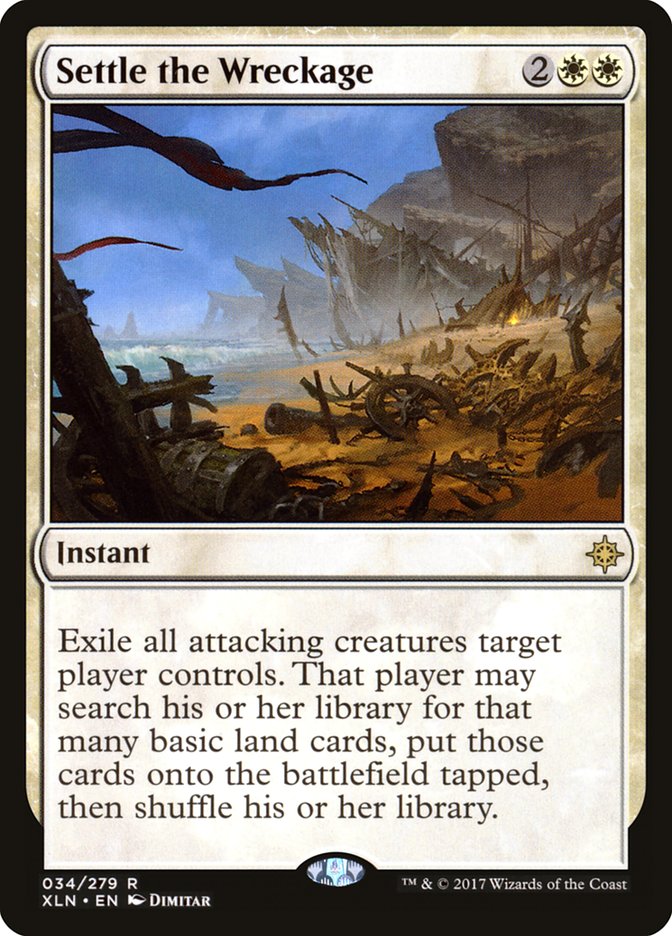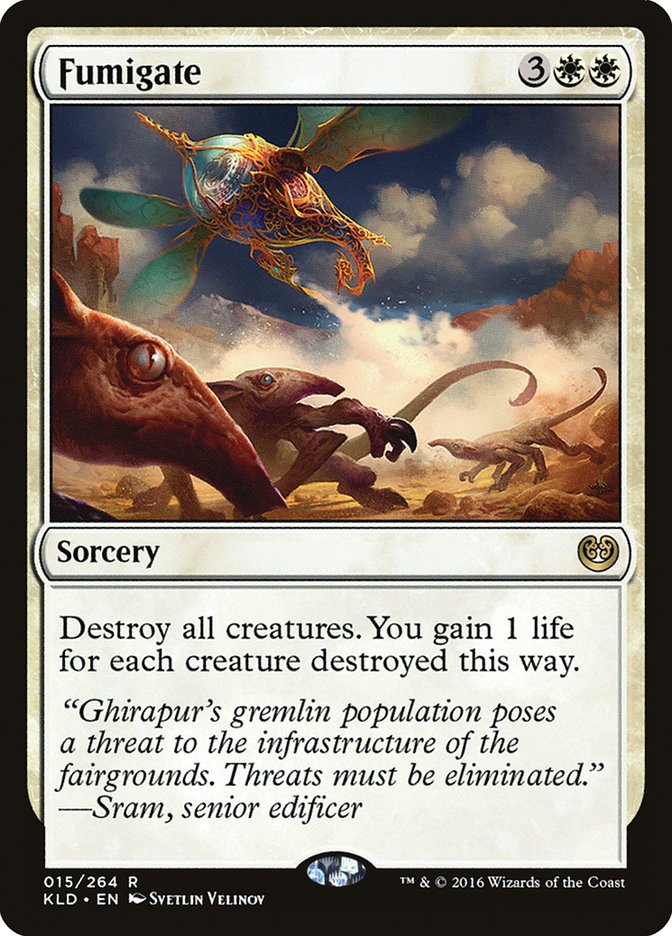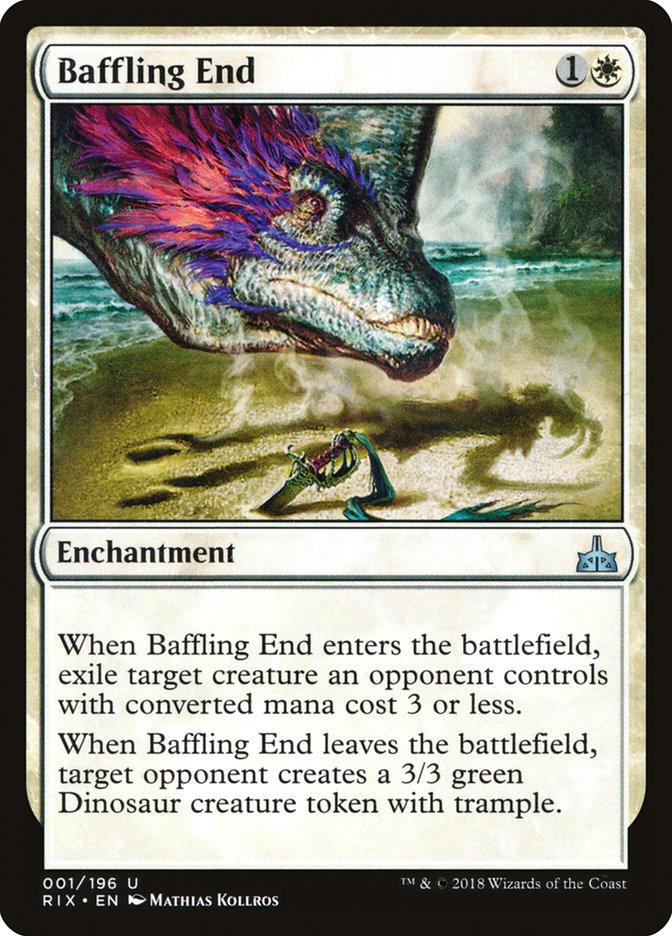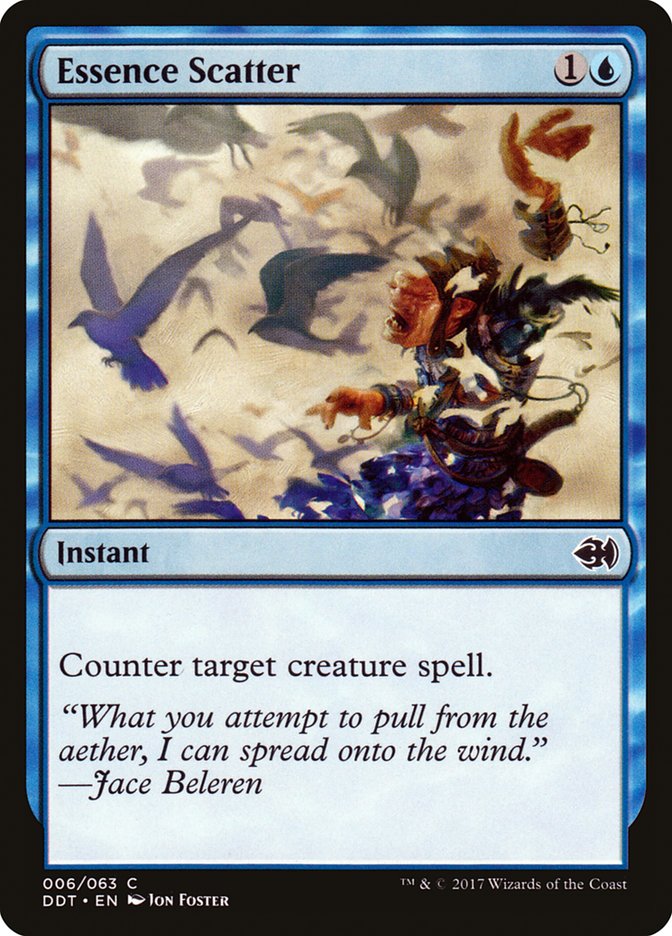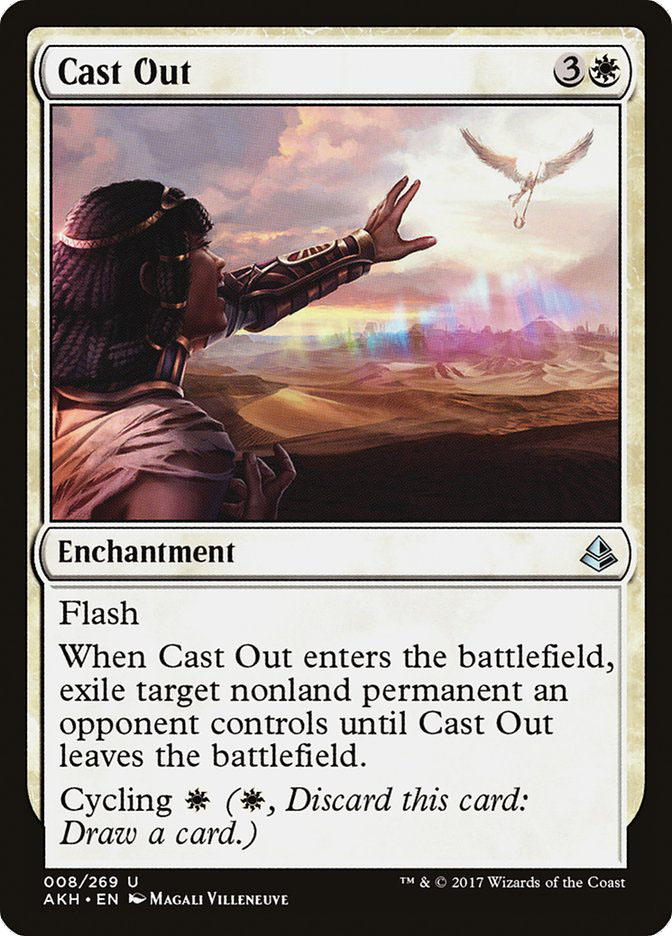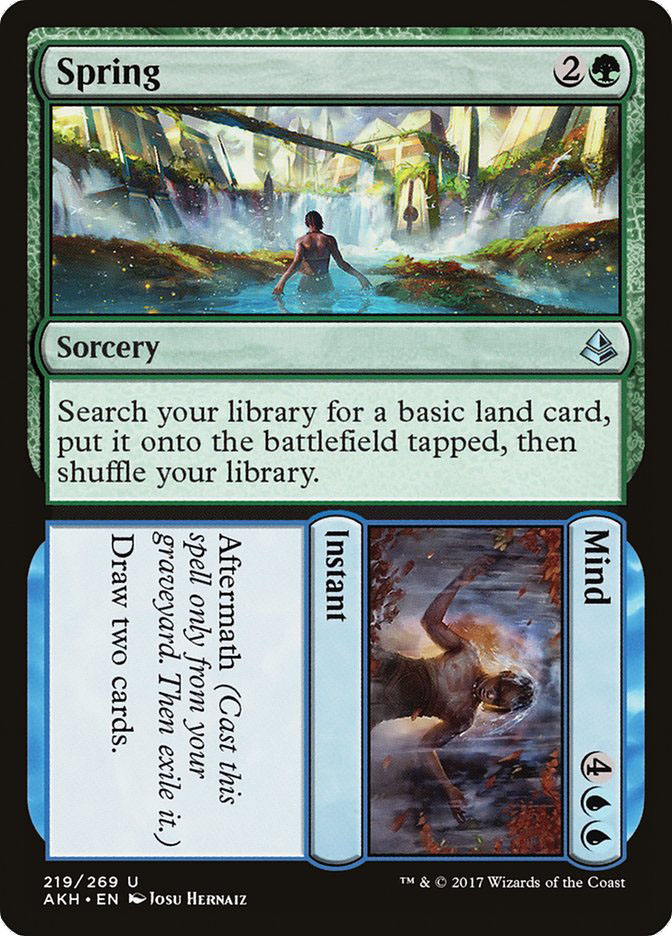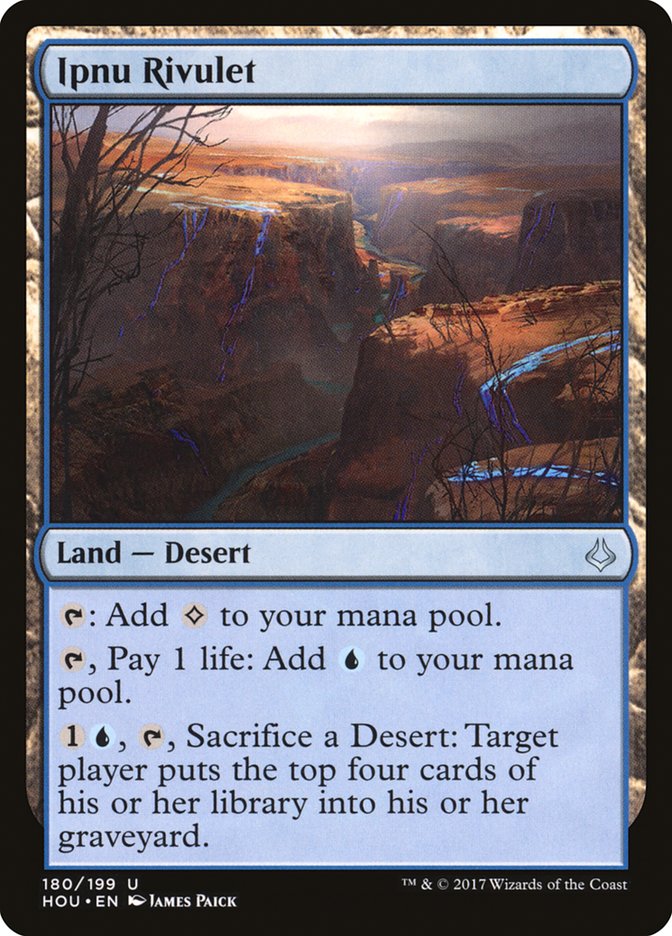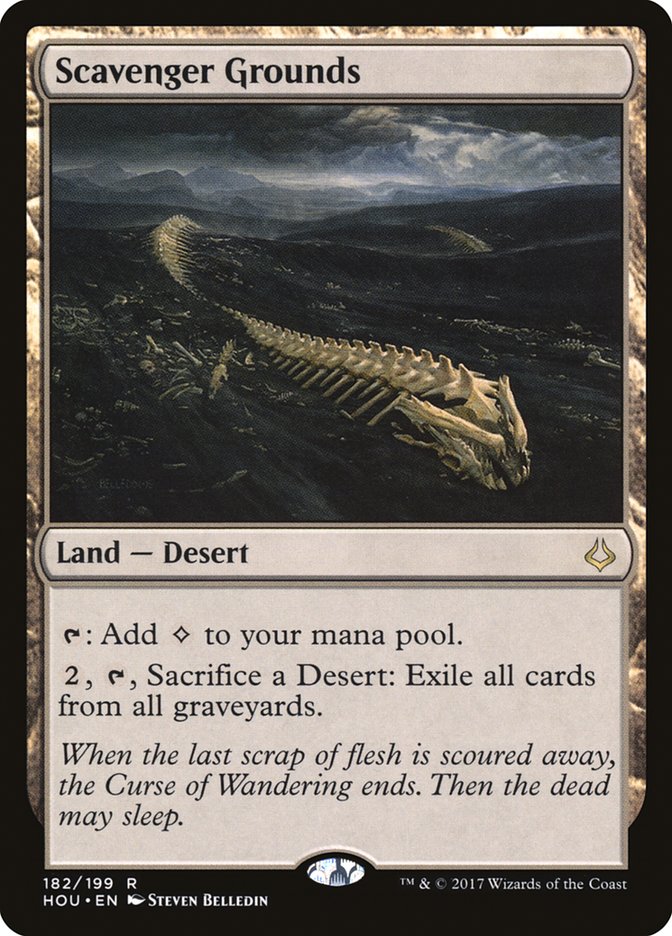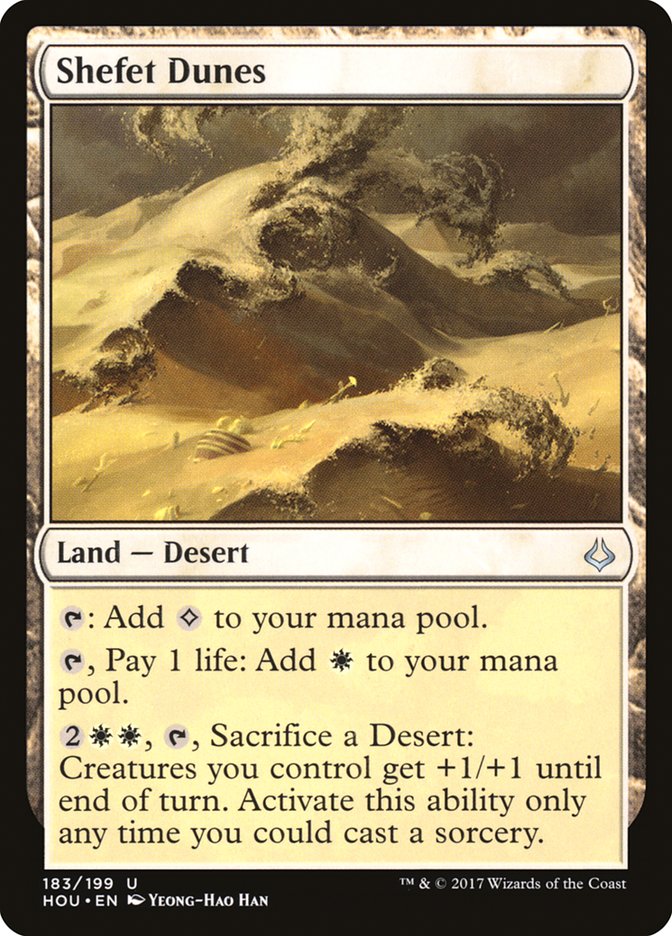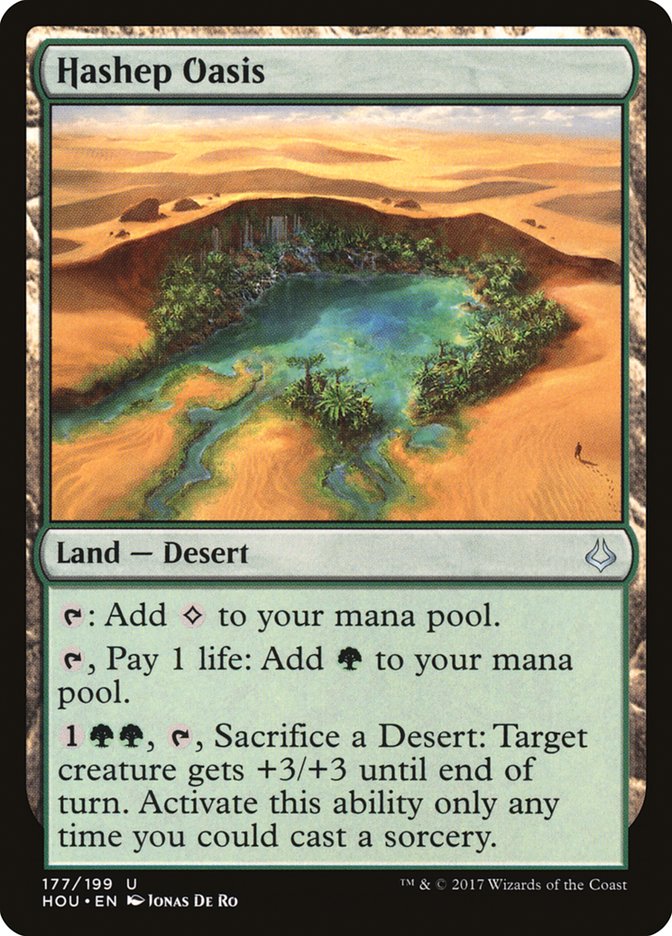I’ve been trying to make Thaumatic Compass work since the full
Ixalan
card list came out.
Something about Thaumatic Compass, and the
flip-lands
in general, just really catches my fancy. On the front side Thaumatic
Compass is the playable but very unexciting Journeyer’s Kite, a card that
saw mild play in Kamigawa Block Constructed (What? you don’t
remember the riveting excitement of Kamigawa Block Constructed?)
While having a front side is not irrelevant, the only real reason to play
Thaumatic Compass is the chance to find the Spires of Orazca.
When I look at Thaumatic Compass, I don’t see a Journeyer’s Kite…
…I see a Rampant Growth stapled to a Maze of Ith, and that’s something to
get excited about.
The problem is finding a deck that’s capable of both flipping it as well as
making good use of it.
I made a number of attempts after Ixalan was released that have
been thankfully lost in the sands of time. But I was back at it with the
release of Rivals of Ixalan:
Creatures (12)
Planeswalkers (4)
Lands (26)
Spells (18)

First and foremost, don’t try this at home!
I was trying to execute a Legacy Lands-style strategy in Standard and the
attempt failed miserably. Without a way to draw a lot of cards Wayward
Swordtooth never had any lands to put on the battlefield, and don’t get me
started if you played against a deck without a lot of creatures in it.
While recurring infinite Ifnir Deadlands seemed like a cool idea, it was
astoundingly slow and awful against any deck with creatures small enough to
kill with a -2/-2 effect.
While the deck was a complete failure, there were a few cool things learned
from it though.
Tip:
This is the most important part of brewing, bar none. Most brews suck,
but there’s usually little bits of good to be learned from each brew.
It’s not a failure as long as you learn something from it!
Hour of Promise showed considerable promise in the deck, both alongside
Thaumatic Compass and as a way to find and immediately activate Arch of
Orazca. Still, it was a nice diamond in some very serious rough. I
discarded the deck and moved on to working on my
W/U Sram Auras
deck and various U/W Approach decks in preparation for #SCGDFW.
Through my testing with U/W Approach, my teammate Jody Keith suggested I
try the Bant Approach deck he played at Pro Tour Ixalan in lieu of
straight U/W Approach, giving me this list:
Lands (25)
Spells (35)

Serendipity.
Jody wasn’t aware of my love for Thaumatic Compass, nor my constant brewing
to try and make it work with Hour of Promise. Sometimes it all just comes
together. I loaded it up on Magic Online and started tinkering.
We ended up here for #SCGDFW:
Lands (25)
Spells (35)
- 2 Essence Scatter
- 3 Fumigate
- 2 Cast Out
- 4 Approach of the Second Sun
- 4 Spring
- 2 Gift of Paradise
- 4 Hour of Promise
- 3 Settle the Wreckage
- 2 Search for Azcanta
- 3 Ixalan's Binding
- 3 Thaumatic Compass
- 3 Baffling End
Sideboard

This deck is the ultimate “don’t win, just don’t lose!” style deck.
While Approach of the Second Sun is clearly our main win condition, our
primary goal is to simply not die while we develop our mana base. The
longer the game goes on, the more advantage we can leverage from our
various lands and card advantage sources, which will eventually lead us to
victory. That victory will likely be fueled by casting our second copy of
Approach of the Second Sun, but also often comes via a flurry of Ipnu
Rivulet activations. It can even come via Zombie token beatdown, although
not as often. Creature beatdowns are more prevalent after sideboarding.
So, how do we go about not dying?
The white mass removal package of Settle the Wreckage and Fumigate should
be very familiar to anyone who’s played Standard recently, but Spires of
Orazca adds a completely new dimension to the pair. Magic players have been
trained to play around Wrath of God effects for years and are likely to
pace their threats as to not see it all blown up in one shot. Settle the
Wreckage is theoretically even easier to play around, as whenever your
opponent is presenting the mana to cast it you can pick and choose your
attackers with great care.
Spires of Orazca, and to a lesser extent an Approach of the Second Sun
looming on the horizon, throws a total wrench in either of those plans.
With one or more active Spires of Orazca on the battlefield, your opponent
now has to commit even more resources onto the battlefield and into the
combat step than they would like to actually make headway on your life
total. Spires of Orazca defends you nicely until things get out of hand, at
which time you can fire off one of your sweepers. Spires of Orazca also
does a fantastic job and protecting you from hasty follow ups the turn
after you Fumigate, keeping tough ones like Hazoret the Fervent and
Glorybringer at bay.
Of course we can’t rely only on our midgame sweepers for defense, or we may
just be dead before we can even cast that Fumigate. The new Baffling End is
a fantastic addition to the deck, giving you a great removal play on turn
2, which can set you up to spend turn 3 ramping into your five-drops.
Essence Scatter serves a similar purpose while also giving you great late
game utility against bombs like The Scarab God.
Tip:
You really want to try and spend your mana on turn
2
if possible, even if the threat you are removing isn’t that impressive.
You often need a turn or two to get yourself set up, and don’t want to
die with unused removal in hand. Plan out your turns and don’t leave
mana wasted!
Your Cast Out and Ixalan’s Binding duo offers you answers to pretty much
any problem you’ll face, with Ixalan’s Binding also doing some long-game
heavy lifting. You plan on playing many turns in each game, which makes
Ixalan’s Binding a very reliable source of virtual card advantage as the
game goes on. It’s very nice to use Ixalan’s Binding on a card like
Glorybringer or The Scarab God and never have to worry about it again.
Once you’ve gotten the whole “not dying” thing down, it’s time to start our
engines.
Spring is everything we could ever want. A three-mana Rampant Growth isn’t
ideal, but being able to deposit Mind into our graveyard to cast later when
we’ve stabilized with a bunch of lands on the battlefield is awesome.
Spring is the beginning and the end of the story, with “not dying” the
middle.
Search for Azcanta continues to be one of the best cards in Standard,
filtering our draws and ensuring our land drops until it turns into a
monster card advantage machine. It’s also a Rampant Growth too!
Everything’s a Rampant Growth! What could be better than casting tons of
Rampant Growths and drawing tons of cards? Any good amount of time with
Azcanta, the Sunken Ruin will usually earn us the win. The only problem is
its legendary status, which limits us to two copies.
Which brings us to the true hero of the deck, the Arch of Orazca tech from
our failed G/B Lands deck.
Arch of Orazca, in conjunction with the deck’s centerpiece Hour of Promise,
is the card that makes this deck work.
You get a bunch of nice utility from all of your cool lands, but Arch of
Orazca is the card that pays you off for having a ton of lands on the
battlefield and provides almost unlimited inevitability. One of the
problems with Hour of Promise is making sure you actually have good things
to do with all the mana you get. In past formats, Hour of Promise was just
used to race to Ulamog, the Ceaseless Hunger, but here we get to use it as
double Rampant Growth, double Demonic Tutor, and double Grizzly Bear.
That’s a lot of value for five mana!
Hour of Promise does it all.
It gives us the mana to fuel our card draw, flips Thaumatic Compass,
provides some annoying attackers/blockers to get through, and tutors up all
of our special lands. Aside from Arch of Orazca, there’s a wide variety of
utility deserts in the deck that also aid us.
Ipnu Rivulet is perhaps the most important, as it builds an actual win
condition right into your mana base. Most decks playing Ipnu Rivulet
currently do so to either put extra cards in their graveyard for
God-Pharaoh’s Gift, or to shave four draw steps off of an Approach of the
Second Sun’s second casting. This is because most decks don’t have the
desert ammo necessary to realistically deck someone.
We do.
With a full nine deserts in the deck, milling someone out from 20-30 cards
is very reasonable and is the main plan against any sort of slower control
deck. Low win condition control decks will have a hell of a time getting
through all the Ixalan’s Bindings and Settle the Wreckages in this deck,
even if they can successfully counter your Approach of the Second Sun. They
also have almost zero way to interact with Ipnu Rivulet.
It’s not usually the main plan, but having a powerful late game win
condition at almost zero cost is quite the powerful bonus. We want to be
playing deserts regardless, and are also interested in shaving four draw
steps off of our own Approach of the Second Sun.
Scavenger Grounds is our other very important desert, as the ability to
nuke graveyards over and over is a great tool to have in a world of The
Scarab God and God-Pharaoh’s Gift.
While Shefet Dunes and Hashep Oasis look like desert downgrades from basic
Plains and basic Forest in order to keep our desert count up, they actually
have a surprising amount of utility. While you will occasionally use Shefet
Dunes to pump up a small army of Zombie tokens, both lands really shine in
post-sideboard games.
Shefet Dunes becomes a very serious threat once you start casting Regal
Caracals, which can help attack planeswalkers, gain life, and even outright
kill your opponent. Hashep Oasis is better on one big target, and what
bigger and badder target than Carnage Tyrant? I’ve activated both deserts
many more times than I thought I would playing the deck, so be on the
lookout for spots to use them.

Our sideboard is mostly self-explanatory.
Our copies of Negate and Jace’s Defeat help in control matchups, with
Jace’s Defeat having the extra utility of being able to counter Torrential
Gearhulk, The Scarab God, Whirler Virtuoso, and Merfolk lords.
Desert’s Hold is a great tool against aggressive decks, providing a life
boost as well as shutting down cards like Hazoret the Fervent. The fourth
Baffling End also comes in against aggressive creature decks, along with
Regal Caracal to gum up the ground and let you attack planeswalkers.
Carnage Tyrant is the big one, however, giving you a monstrous threat
against other control and midrange decks.
The great thing is that once you sideboard in your creatures you have many
avenues to victory and can play the game for the one that best fits how the
game is playing out. Maybe Carnage Tyrant just runs them over one game and
you use your removal and counterspells proactively to ride it to victory.
Then in the next game you just use Carnage Tyrant for value to tax their
resources while you set up an Ipnu Rivulet kill. The post sideboard games
are very dynamic, so be ready to change gears.
Legacy Lands… in Standard!
Truth be told, the deck plays out a lot like the pre-Dark Depths Legacy
Lands decks, where you survive, grind, and basically lock your opponent’s
out of the ability to do anything meaningful.
The deck is an absolute blast to play and it feels great to laugh at all of
your opponent’s removal spells in game 1, while throwing them off with
various different plans in games 2 and 3. The focus is almost always on
just staying alive, so make sure you pilot the deck with that in mind.
Also make sure you’re playing fast starting on turn 1! The deck takes a
long time to win and there’s a lot of physical motion involved with having
so many permanents on the battlefield each turn. Make sure you’re practiced
with both the play of the deck and the mechanics of actually playing it to
avoid unnecessary draws. Be crisp with your mechanics and organize your
lands in a quick and easy to use manner.
Otherwise, have fun not dying, and remember… winning is secondary!


